
Are you ready to take your grilling skills to the next level? It’s time to master the art of cooking the perfect ribeye on the grill — a juicy, flavorful steak that will impress everyone at your table. In this step-by-step guide, you’ll discover the secrets to grilling ribeye like a pro. Learn how to choose the best cut, season it perfectly, and grill it to perfection every time.
Key Takeaways
- Learn how to choose the perfect ribeye steak for your grilling needs
- Discover the importance of marbling and aging for optimal flavor and tenderness
- Master the art of preparing your grill for how to grill ribeye steak perfection
- Explore essential techniques for seasoning, marinating, and searing your ribeye steak grilling tips
- Discover the secrets to resting and slicing your steak like a pro
The Art of Selecting the Perfect Ribeye Steak
Choosing the perfect ribeye steak is the first step toward outstanding grilling results. To make the best choice, it’s important to understand the different cuts (like bone-in vs. boneless) and USDA beef grades such as Prime, Choice, and Select. Also, pay attention to marbling, the intramuscular fat that adds tenderness and flavor, and consider dry-aged or wet-aged ribeye for a deeper, richer taste. Mastering these details ensures the ultimate ribeye steak experience.
Choosing the Right Cut and Grade
When it comes to ribeye steak, the cut and grade play a major role in the final result. Look for a well-marbled ribeye with a vibrant, cherry-red color and a firm yet velvety texture. These visual and tactile signs indicate freshness and quality. For the best ribeye steak quality and flavor, choose steaks graded USDA Choice or Prime, as they offer the perfect balance of tenderness, juiciness, and rich beefy taste.
Understanding Marbling and Aging
Marbling—the fine streaks of fat within the muscle—is a key indicator of how tender, juicy, and flavorful a ribeye steak will be. Generally, the more marbling, the richer and more satisfying the taste. In addition to marbling, aging the ribeye steak—whether dry-aged or wet-aged—enhances its texture and deepens its beefy flavor. Together, marbling and aging make a big difference, making them essential factors when choosing the right ribeye steak.
| Ribeye Steak Attribute | Ideal Characteristics |
|---|---|
| Cut | USDA Choice or Prime |
| Marbling | Abundant, well-distributed |
| Aging | Minimum of 21 days for enhanced flavor and tenderness |
Keep these tips in mind to pick the perfect ribeye steak. This will help you have a great grilling experience.
Preparing Your Grill for Ribeye Perfection
Getting your grill ready is a crucial step in cooking the perfect ribeye steak. Make sure your grill can reach and maintain the high heat needed for a proper sear and even cooking. Preheating your grill thoroughly ensures that the steak develops a rich, caramelized crust while staying juicy inside. This preparation sets the stage for a truly delicious grilling experience.
Cleaning and Oiling the Grates
Begin by cleaning your grill grates well. Use a grill brush or a ball of aluminum foil to get rid of any leftover food or residue. This ensures your ribeye won’t stick to the grates. Then, lightly oil the grates with a high-heat cooking oil like vegetable or canola oil. This creates a non-stick surface.
Preheating for the Perfect Temperature
Getting your grill to the right grill temperature for ribeye is essential for achieving a perfect sear and even cooking. Preheat your grill to around 450–500°F (232–260°C) — this level of high heat is ideal for developing that beautiful, flavorful crust on the outside while ensuring the inside cooks to your desired doneness. Knowing how to prepare the grill for ribeye is just as important as choosing the right cut.
- Preheat the grill for at least 15-20 minutes to ensure it reaches the proper temperature.
- Use a grill surface thermometer to check the temperature and adjust as needed.
By preparing your grill well, you’re on your way to grilling a ribeye steak that’s perfectly seared and juicy. Follow these tips to master how to prepare grill for ribeye and grill temperature for ribeye. This will give you a great grilling experience.

Perfect Ribeye on Grill: Essential Techniques
Learning to grill the perfect ribeye steak comes down to mastering a few key techniques. These include proper seasoning, flavorful marinating, precise grill temperature control, and achieving that ideal sear. When done right, each of these steps enhances the flavor, tenderness, and juiciness of your grilled ribeye steak recipe, delivering steakhouse-quality results right from your backyard.
Seasoning and Marinating for Flavor Explosion
For a delicious ribeye steak seasoning, mix spices and herbs well. Start by seasoning your steak with salt, pepper, and your favorite herbs or spices. For extra flavor, make a ribeye steak marinade with soy sauce, olive oil, garlic, and more seasonings. Let the steak marinate for at least 30 minutes or up to 24 hours for the best flavor.
Mastering Grill Temperature and Searing
Getting a great sear on ribeye steak is key for keeping juices in and creating a tasty crust. Heat your grill to 450-500°F before adding the steak. Don’t move the steak while it’s searing to get a nice crust. After searing, lower the heat to medium-high and cook until it’s done, usually 4-6 minutes per side for medium-rare.

“The secret to a perfectly grilled ribeye steak lies in the right balance of seasoning, temperature, and searing technique.”
Mastering these techniques will empower you to cook grilled ribeye steak that’s incredibly flavorful, tender, and cooked just the way you like it. Remember, the key to success lies in patience, careful attention to detail, and a willingness to experiment with different methods until you discover what works best for your grilling style.
Grilling Tips for Juicy and Tender Ribeye Steaks
Once your perfectly grilled ribeye steak is off the heat, the final steps of resting and slicing can make all the difference. These expert tips will help ensure your ribeye steak is juicy and tender.
Resting and Slicing Like a Pro
After grilling your ribeye to perfection, allow it to rest for 5–10 minutes before slicing. This crucial resting period helps the juices redistribute evenly throughout the meat, ensuring every bite is flavorful and moist. When it’s time to slice, use a sharp, high-quality knife and be sure to cut against the grain—this technique creates tender, easy-to-chew slices that elevate your steak to restaurant quality.
Mastering the art of resting and slicing your ribeye steak is key to the perfect result. With these simple tips, you’ll grill like a pro and impress your guests with every bite.

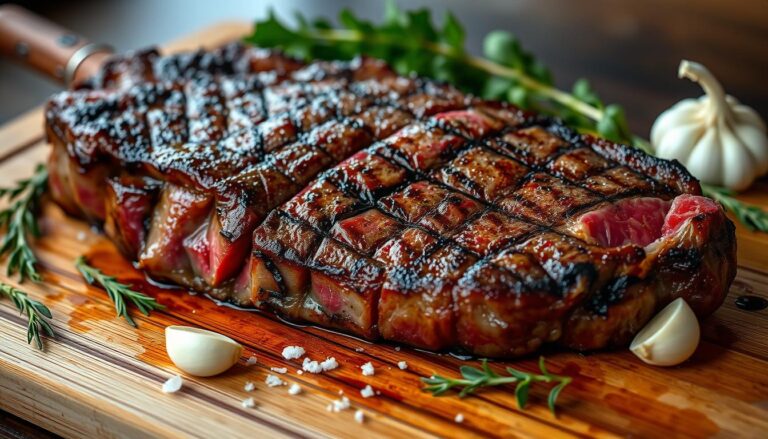
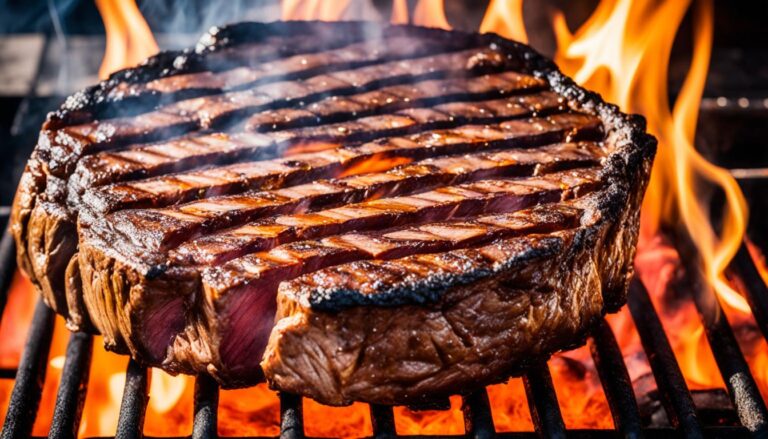
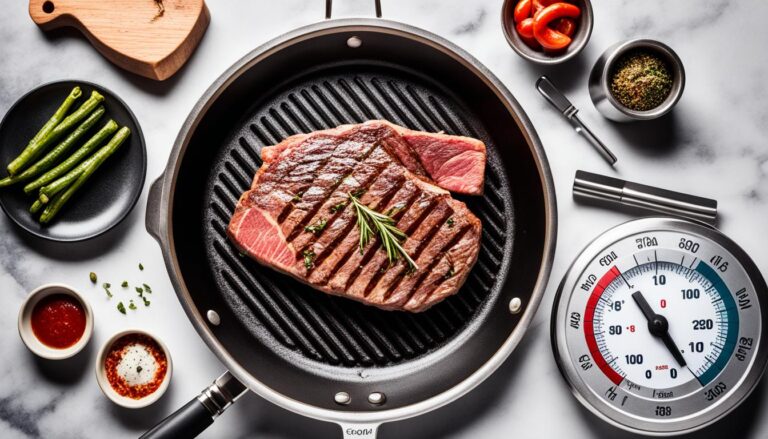
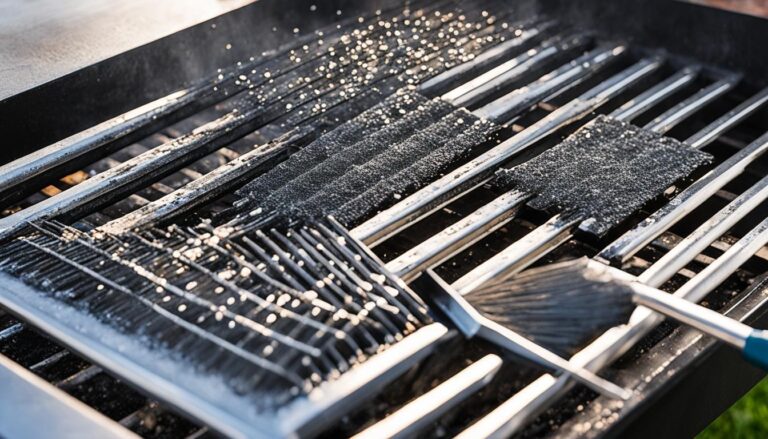
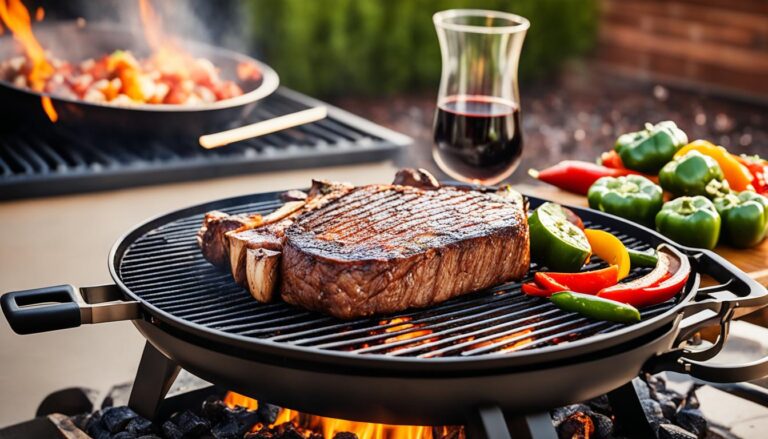
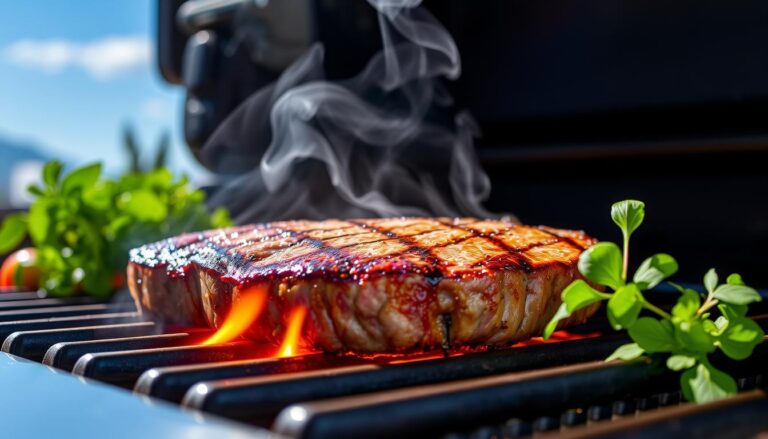
4 Comments